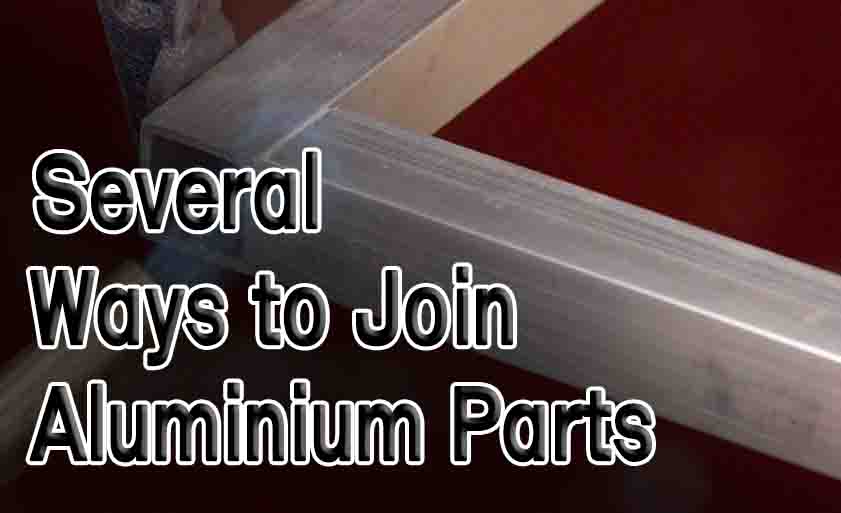Being a lightweight and high-strength metal, Aluminium is commonly used in various industries. From household utensils to aircraft, Aluminium applications are everywhere. Due to its widespread, they are different methods for joining this metal. Each method is suitable for certain needs.
This article highlights the five commonly used ways to join Aluminium. It also explains the specific use case, pros, and limitations of each process.
Table of Contents
1. Welding
Welding is a common method for joining and repairing metal parts. In this process, the Aluminium workpieces are melted at high temperatures and then fused. Since welding is done through various techniques, the commonly used welding methods for Aluminum include arc welding, TIG welding, MIG welding, resistance welding, and laser welding.
Since welding is done through different techniques, and produces high-strength joints. Its use case is universal. It is widely used in all industries starting from airspace, and marine to automotive and manufacturing.
Pros:
- Produces high-strength joints
- Suitable for a wide range of aluminum thicknesses and shapes
- Can be used to join dissimilar materials
- Welded joints can be polished to a uniform appearance
Cons:
- Produces hazardous fumes
- This may result in warping or distortion of parts
2. Brazing
Brazing is another method for joining Aluminium parts. In the brazing process, the filler metal is melted and the joint has filled that metal. A flame torch (propane) and a filler metal, usually one with a lesser melting point than the base metal, are used for brazing.
Brazing is best for applications where a strong, leak-tight joint is required such as pipings, and heat exchangers.
Pros:
- Uses inexpensive tools; it is a cost-effective process
- Can be used to join different aluminum alloys as well as dissimilar metals
- Produces strong leakproof joint
- The Joint has good corrosion resistance.
Cons:
- Limited thickness sheet can be joined
- Weaker Joints compared to welding
3. Soldering
Soldering is similar to brazing. However, it takes at a slightly lower temperature, less than 450 degrees. Soldering of Aluminium is comparatively hard since it requires a specialized filler, such as zinc chloride.
This process has the weakest joint strength compared to other processes mentioned in the article. Therefore it is used in small-scale applications. For instance, soldering is quite common in the electronic industry for making electrical connections on printed circuit boards and electronic components.
Pros:
- Generally cheaper than other methods of joining aluminum, such as welding.
- Can be used to join different thin Aluminium sheets, and dissimilar aluminum alloys.
- Requires less specialized equipment.
Cons:
- Limited joint strength
- Joints may not withstand high temperatures
- Very limited use case
4. Mechanical Fasteners
Mechanical fasteners, such as bolts, screws, rivets, and nuts, are also used to join aluminum parts together. These fasteners can combine and join different aluminum alloys and even dissimilar metals.
Though mechanical fasteners result in strong joints that can withstand high loads, they aren’t like permanent joints produced by welding or brazing. That is considered one of their major advantages.
Mechanical fasteners are best for non-permanent joints. Their major application is in construction, where they are used in s roofs, facades, and curtain walls. Similarly, they are also used for fastening mechanical components in the auto industry.
Pros:
- Provide a strong and durable joint that can withstand high loads and stresses.
- This method is relatively inexpensive and requires minimal equipment
- Fasteners are relatively easy to install and can be easily removed and replaced if necessary
- Strong yet non-permanent joints
Cons:
- Can create stress concentrations, which can lead to fatigue cracking over time.
- The presence of visible fasteners can affect the appearance of the aluminum parts being joined
5. Adhesive Bonding
Adhesive bonding is another popular method for joining aluminum parts together, as it provides a strong and durable bond without the need for mechanical fasteners. It involves the use of an adhesive to create a bond between two or more aluminum surfaces, creating a uniform joint.
Pros:
- Provides great fatigue resistance in cyclic loading applications.
- Produces high-stress joints without creating stress concentrations
- Can be used for joining dissimilar metals
Cons:
- Requires a curing time, which can affect the production cycle time.
- Limited to joints with a thickness of up to several millimeters.
Conclusion
Aluminium can be joined using several ways. However, each method comes with its own advantages and limitations.
Welding produces high-strength joints but requires skilled labor and equipment. Brazing and soldering are useful for thin parts and can be automated for high-volume production. Mechanical fastening is simple and fast and can create stress concentration regions. Adhesive bonding produces a uniform appearance and is an appropriate method for thin or dissimilar parts but its joints aren’t as strong as other methods.
So, the choice of joining method depends on the specific application, materials, and desired outcome.

